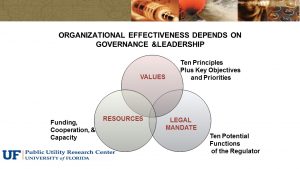Practicing Leadership in a Political Environment
“If you find a path without any obstacles, it probably does not lead anywhere.” (Anon)
Leaders, Authorities & Leadership

Adaptive Leadership
“The species that survives is not the most intelligent, but the most adaptable.”
“The organization that prospers is not the most technically competent, but the most adaptable.”
Emerging issues require adaptive responses.
- The capacity to raise awareness about the issue at hand, and the importance of taking action quickly;
- The ability to highlight both challenges and opportunities in any situation;
- The capacity to act as a negotiator and intermediary between the various organizations that are part of the initiatve, as well as external stakeholders
Executing Change: The primary role of the Guiding Coalition is executing change. Other groups should serve the roles of fact-gathering and consensus building. There is evidence that if the Guiding Coalition included people who were not in agreement on the change or still pondering, that the change would fail (John Kotter, who focused on making lasting change in a chosen direction). Thus, other groups should be designed to emphasize the work of helping people learn and make choices: the boundaries of those groups always evolve (Kahane and Heifetz). Ultimately, collaboration involves a number of elements.
When there is distrust of authority and the social fabric is tattered, building trust becomes a top priority. Previous modules have recognized “collective impact structures” as mechanisms for bringing together diverse stakeholders with different programs—the result involves a backbone organization for coordination, with data as the organizing element. The Guiding Coalition develops a shared reform agenda and creates a measurement system (to facilitate the determination of realistic targets and the monitoring of performance). The goal is to get away from ideology (preconceived views as to actions to improve infrastructure performance) and to focus on what is working within the current system how programs can reinforce one another.
Designing collaborative ventures should reflect the insights of authors and scholars: facing brutal facts (Jim Collins), common understanding of main challenges and threats (Patrick Lencioni), building foundations of trust through learning about and valuing others (Patrick Lencioni), surfacing threats and harsh realities (Ron Heifetz), treating interventions of hypotheses tests (Ron Heifetz), adapting as new learning occurs (Ron Heifetz), developing the public narrative (Marshall Ganz), and mutual exploration of ideas with which many in the group may disagree (Adam Kahane).
Leadership vs. Leading
- Leader provides direction (when the right direction is already known).
- Leadership mobilizes people to tackle difficult and often ambiguous problems and circumstances. (Heifetz, Ronald A. 1994. Leadership Without Easy Answers, p. 15)
- Develop fresh perspectives and knowledge about the future, all the while holding and trusting the wisdom of the past
- Qualities that can support leadership – charisma, authenticity, communication, skills in conflict recognition/resolution
Tools for Leadership in Reform
- Benchmarking: You manage what you measure.
Performance Assessment –- Statistical benchmarking can reduce information asymmetries. Regulatory agencies can share information to make comparisons across comparable firms.
- For incentive purposes, the best comparisons are on some overall dimension.
- The publication of overall performance comparisons can put pressure on poorly performing divisions (yardstick comparisons)
- High Quality Staff: People matter.
- High quality staff need to be rewarded if they are to be retained.
- Without highly motivated technical staff, the studies analyzing alternative policies will be inadequate.
- Planning and Operations both require technical skills and teamwork.
- Stakeholder Engagement: Understand all perspectives. Stakeholder relationships are important, so getting the organization’s intentions, objectives and policies clearly communicated by the media becomes a significant activity.
- Find forums that promote awareness
- Listen to diverse viewpoints
- Headlines sell newspapers so the education of journalists and the general public warrants substantial attention
- Manage Expectations: Unrealistic goals lead to disappointment and anger.
- Only make promises you can keep
- The best technical studies and innovative incentive schemes will not be accepted if their rationales cannot be communicated to major stakeholder groups.
- Those with narrow interests need to be brought into the decision-process early on so that their perspectives can be heard and taken into account
